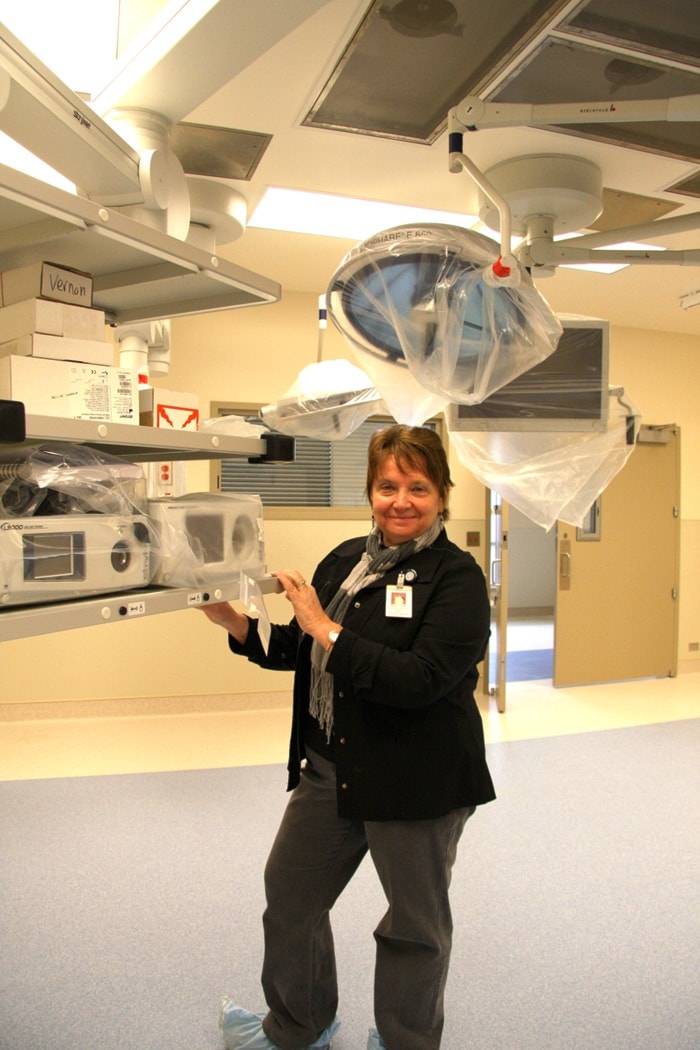Doctors and nurses at Vernon Jubilee Hospital have been operating for years in the surgical equivalent of a closet.
So when new operating theatres open in the VJH Patient Care Tower in September 2011, surgical teams may be forgiven for thinking they are now operating in the equivalent of, well, a theatre.
“I took some staff over to the new tower last week, and they were amazed at the size of the new department” said Mary Ann Petryshen, Perioperative Manager at VJH. “They feel it is just an excellent space.”
As perioperative manager, Petryshen is in charge of some of the most critical acute care areas of the new hospital tower: the surgical suite, including operating rooms (ORs), the post-anaesthetic recovery room (PARR), and the medical device reprocessing department (MDR), where all of the instrument sterilization takes place.
Each of the new ORs is 700 square feet in size, compared to an average of about 465 square feet in the current hospital. The total clinical space available on the surgical floor doubles to 34,000 square feet from 17,500 in the current space. And the MDR area is almost twice as large as the existing space.
“We’ll have to learn new ways of doing things, and figure out how to use all the new space, but let’s face it, that’s a good issue to have,” said Petryshen.
Space is only part of what makes the new tower a first-class health care environment. It’s really the organization of space, the co-location of departments, the new communication technologies and the advanced integration of equipment that will benefit patients the most, said Petryshen.
Take the MDR department, for example. A large volume of work is in cleaning scopes for use in procedure rooms in the ambulatory care department.
“Right now, it’s a big trip to get from MDR to Ambulatory Care. In the new tower, they’re right next door.”
MDR is also right beneath the ORs, and there are separate dedicated elevators for clean and soiled equipment.
There is enough room for case carts containing surgical instruments to be prepared in MDR, rather than in the OR sterile core, as is the case today.
“It makes for a much healthier environment, better quality control and it’s more efficient.” said Petryshen.
Similarly, there will be a dedicated elevator from the Women’s and Children’s floor, just above the ORs on the fourth level, to expedite emergency Caesarean sections.
There will also be much greater efficiency in the operating rooms themselves. Each OR will have a dedicated integrated equipment management system, so there won’t need to be as much movement of equipment from room to room.
A new system called Vocera will allow hands-free communication between different parts of the hospital, increasing the amount of information-sharing that can be done without direct contact.
And the OR patient -holding area, where patients are admitted and interviewed prior to their procedures, is much more modern, with individual assessment rooms, providing a level of privacy and confidentiality not available in the current OR, said Petryshen.
“This move is going to bring benefits everywhere you look. From larger better-designed spaces, to much more natural light and healthier working conditions, to medical and communications technology that helps us do our jobs better and take better care of patients.”
